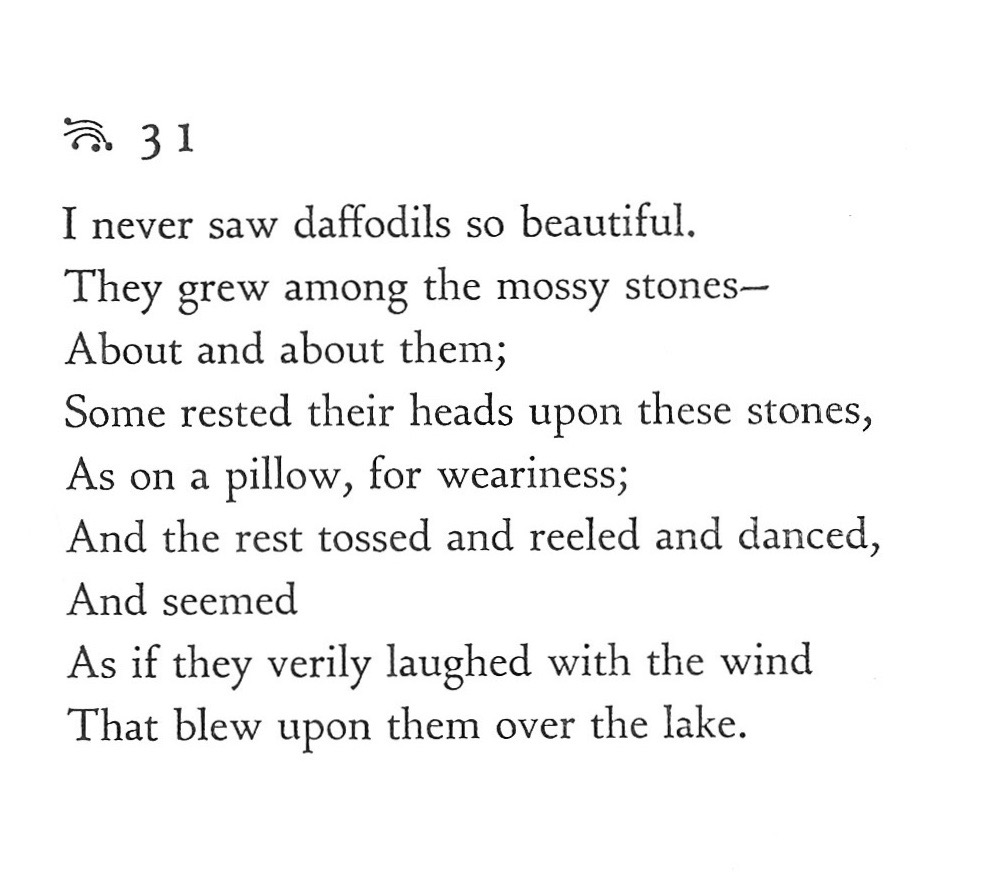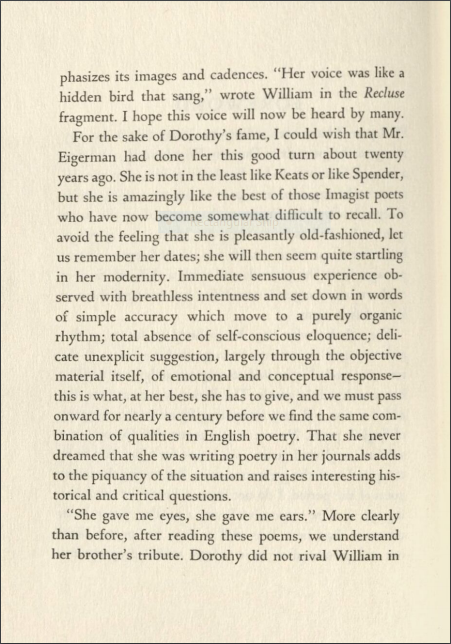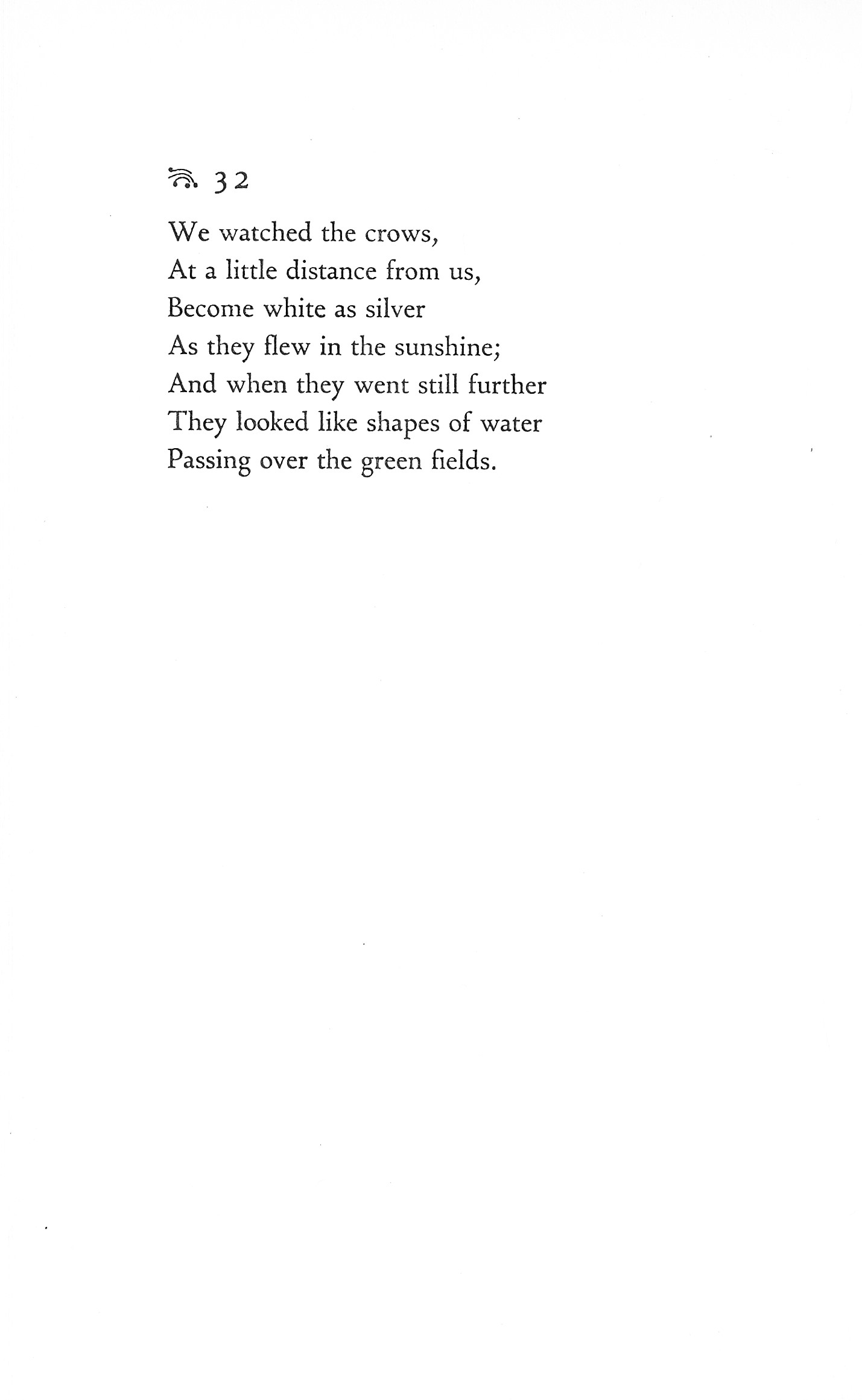
“I tried to write verses, but alas!” So said Dorothy Wordsworth in her Grasmere Journal, but later scholars and critics have seen her own capacity as a poet. Already noted for her keen eye and rigorous attention to detail, Dorothy might also be appreciated for the imagery and passionate cadences of her writing. Accordingly, around the time of World War II, educator and scholar Hyman Eigerman arranged selections from her journals and letters into a loose poetic form to emphasize her talent for strong imagery and rhythm, and the result seems surprisingly modern. Here we can more clearly see what Virginia Woolf meant when she wrote of Dorothy’s prose, “one feels the suggestive power of which is the gift of the poet rather than of the naturalist, the power which, taking only the simplest facts, so orders them that the whole scene comes before us, heightened and composed, the lake in its quiet, the hills in their splendour.”

